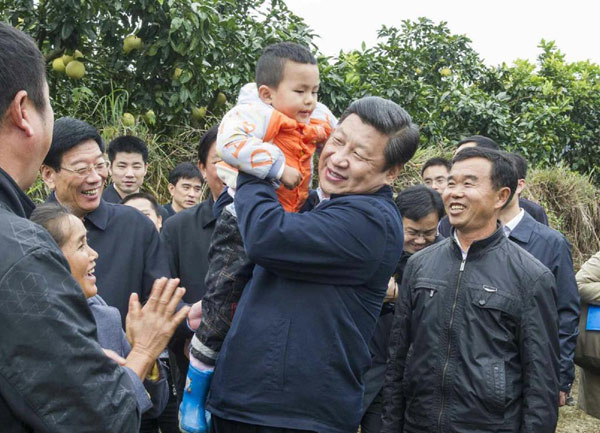
On October 23, 2023, Xi Jinping, gave a speech calling for China to “cultivate a new marriage and childbirth culture, strengthen guidance of young people’s views on marriage, parenthood and family, as well as promote policies to support childbirth.” This speech came on the heels of the news that India’s population would surpass China’s at some point during the year. China will no longer be the most populous country in the world, a title they have held as long as population data has been collected by the UN.
China’s views on population growth have shifted substantially since the latter half of the 20th century because of its low birth rates. In the 1970s, China’s huge population strained the country’s food production, and the government worried that continued population expansion could lead to another massive famine. In response, the Chinese government implemented the one-child policy in 1982, prohibiting women from having more than one child. The birth rate in China has fallen from nearly seven children per woman in 1965 to 1.18 children per woman in 2021. Even after the end of the one-child policy in 2016, Chinese birth rates have continued to fall. According to UN projections, the Chinese population will shrink to 770 million by 2100.
An unforeseen side effect of low birth rates is an increasing proportion of elderly people in the population. The Chinese retired population has grown from 6 percent in 1970 to nearly 20 percent in 2023, while its working age population will begin to shrink in less than a decade. This is particularly troublesome because the extensive growth model that has fueled China’s development over the past few decades relies heavily on increasing the number of workers involved in production.
Unless China’s leadership quickly finds a solution, their economy will be crushed by their declining workforce. Their economy is now at capacity of workers and unemployment has stagnated around 5 percent. As the labor supply tightens, wages will increase, eliminating the cheap labor that has grown the Chinese economy.
However, China is not alone. Birth rates have declined all across the developed world. Falling birth rates are generally correlated with liberal social developments like increased access to contraception, increased rights and career opportunities for women, and reduced dependency on children for financial support in old age. These factors have caused Xi and other world leaders to blame the problem on the decline of the nuclear family, calling on young people to return to traditional norms to combat the crisis. In China however, further reducing the workforce by removing women could spell disaster for their economy.
Despite declining birth rates, the global population is still rising. The populations of India and African countries specifically are exploding as greater prevalence of medicine, agricultural productivity, and sanitation raises the average life expectancy. Moreover, the birth rates of individuals whose families have immigrated from developing nations to wealthier nations within three generations stays close to that of their home countries. It is for this reason that countries who take in a relatively higher number of immigrants, like Germany and the United States, have not seen fertility rates drop nearly as severely as those who deny immigrants like Japan.
Before China sends women home from work, it would be prudent for them to reevaluate their immigration policy. Immigration could be used to curb falling birth rates, but their immigration efforts would have to be colossal due to the scale of the Chinese workforce. Luckily, their neighbor India has the largest number of emigrants in the world, with 17.8 million people leaving the country last year to live elsewhere.
China wouldn’t even have to wait for birth rates to change for their economy to be impacted. Immigrants tend to be young adults who could be employed immediately upon their arrival. China would also be sufficiently attractive for prospective Indian immigrants as Chinese wages average two to three times higher than their Indian counterparts. China currently has only 1 million foreign-born residents, less than 0.1% of the population which is the smallest number of international migrants of any major country in the world.
However, current barriers to permanent residency could discourage immigrants from staying in China long term. There is a formal naturalization process, but the chances of an application being accepted are near zero. Work visas are granted more regularly but are often revoked without notice. Substantial changes would have to be made to China’s policies and attitudes for large scale immigration to be feasible.
In the long term, China will still need to figure out how to convince their citizens to have more children. Data suggests that immigrants’ birth rates correct to those of the general population within three generations, meaning that the problem will be ongoing. Also, as conditions improve in developing nations, their birth rates will also fall making immigration a less effective countermeasure. In the interim, however, immigration could be a great band-aid for China’s depopulation problem.



